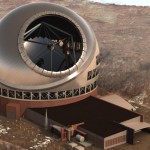With the controversy again raging over the TMT we are again seeing complete mis-representation of astronomy in the press and social media. These postings and comments make interesting reading. These show the wide range of feelings in the community. There also seems to be a misunderstanding about the roles of large telescopes in general.

Note: This post was originally written and posted to the old DarkerView blog in August 2008. Re-posted again as it answers on of the common comments in the current episode of the TMT debate. A few edits thrown in to update for the current context seven years after the first publication.
One of the themes that popped up in the comments several times was the idea that space telescopes are where to put the money and the belief that ground telescopes were “obsolete’, thus projects like TMT are not needed. This could not be further from the truth. Yes there are advantages to space telescopes with respect to interference from the atmosphere. But space telescopes face several severe and inherent disadvantages.
Expense
Space telescopes are hugely expensive for what you get. Hubble is a mere 2 meter class telescope. Very small in the terms of modern telescopes. This limits the performance drastically. Hubble can only collect a little more light than a single segment of the current Keck telescope, and Keck has 36 segments in it’s 10 meter mirror. Work out the math and you find that Keck gathers 25 times more light than than Hubble. The new James Webb Space Telescope will be a 6.5 meter telescope. The Thirty Meter Telescope will be 30 meters with 492 segments, thus will gather 28 times more light than JWST.
Continue reading “TMT versus Space Based Alternatives”
